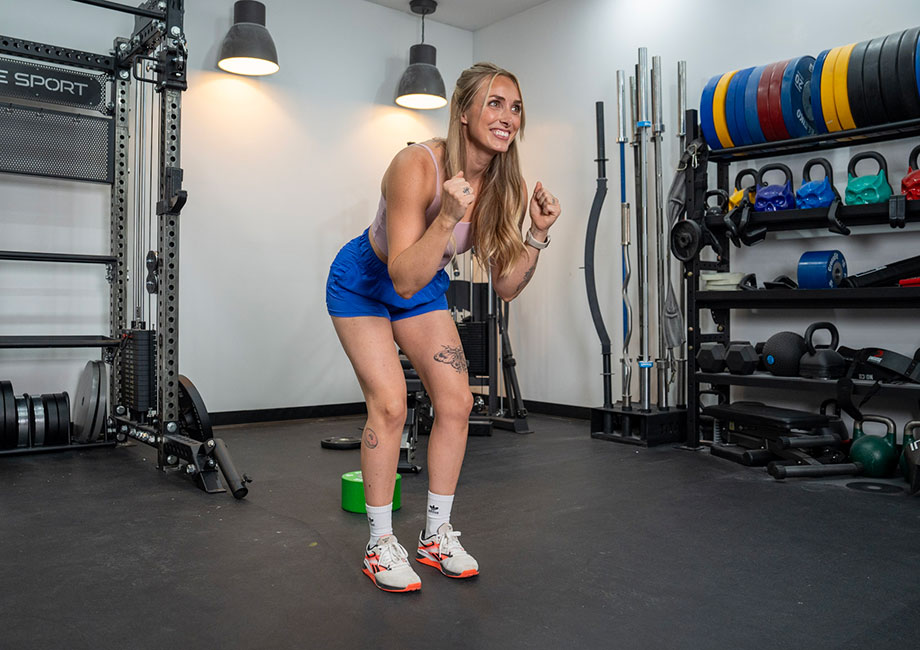We test and review fitness products based on an independent, multi-point methodology. If you use our links to purchase something, we may earn a commission. Read our disclosures.
Before I begin, allow me to clarify one thing. Although this guide is focused on ski jumps, I’m not asking you to board a plane to France or Austria and take part in winter sports. I’ve got nothing against this (I’m an avid snowboard fan myself), but ski jumps in this context are a bodyweight exercise designed to improve your cardio fitness and build muscle in your lower body.
If you’ve never heard of ski jumps, don’t stress. I’m a certified personal trainer (CPT) here to explain how to do the exercise with the correct form. I’ll also describe a few ski jump alternatives, break down the benefits of incorporating ski jumps in your workouts, and explain common mistakes to avoid. You won’t be ready to enter a ski jumping competition by the end of this article, but I can assure you that you’ll have a fantastic way to burn calories from the comfort of your home.
RELATED: Activities That Burn the Most Calories
So, hop in and let’s get started!
How To Do Ski Jumps
To do lateral ski jumps, you don’t need any additional equipment. You’ll begin with your feet together, knees bent, and arms out in front of you (similar to how you see ski jumpers at the Olympic games). Then, you’ll jump from side to side for repetitions or a specific duration of time.
How to do it:
- Stand upright with your feet together and arms down by your sides.
- Squat down by bending your knees. Your chest should be lifted and your arms should be in front of you (similar to skiing).
- Brace your core and keep your head in a neutral position.
- Jump up and to your left side, landing on both of your feet.
- On the next repetition, jump to your right side so you return to the starting position.
- Continue for the desired number of reps or duration of time.
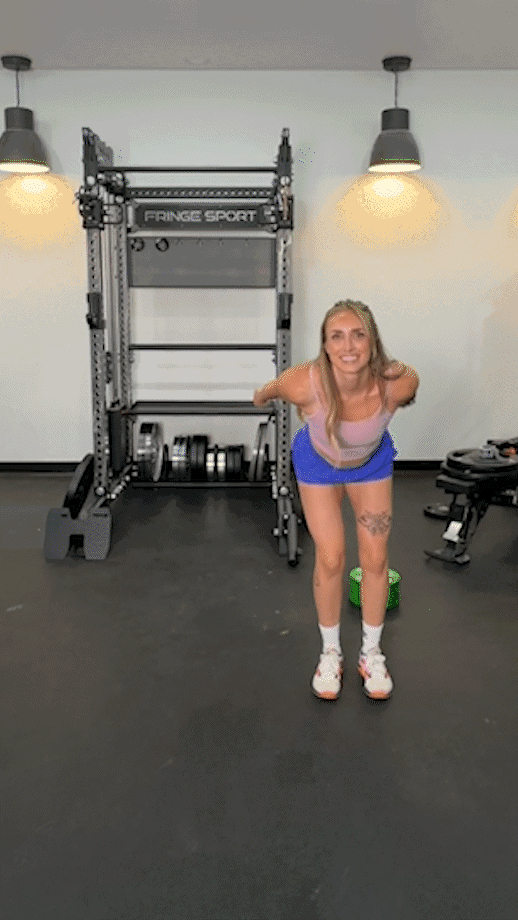
Modifications
- Dial it back: Decrease the number of reps or the duration of time you perform ski jumps. You can also build up your ankle strength and stamina by hopping in place.
- Make it harder: Place a plyometric box or one of the best weight benches on the floor. You’ll need to jump over the equipment on each rep, so the height is important (the higher it is, the more challenging the exercise). Alternatively, you can do single-leg skater hops or hold a dumbbell in each hand to increase your resistance.
How To Do Ski Jumps At Home
Ski jumps are a no-equipment exercise, so you only need a little space to do them at home. Make sure your ceiling height is high enough with nothing hanging from it that could harm you (for example, a light fixture or a ceiling fan).
Ski Jump Alternatives
As a certified personal trainer, I love the ski jump exercise. They’re a bodyweight exercise you can do anywhere, anytime. However, other heart-rate-elevating cardio exercises can give you similar results. See below for a few beginner-to-advanced ski jump alternatives:
Mountain Climbers
Why do it: If you’re a beginner or struggle with the impact that lateral hopping places on your joints, mountain climbers are an excellent starting point to help you build up your stamina. You’ll be taking most of the pressure off your ankles while in the plank/push-up position and can start slow and then gradually increase your speed.
How to do it:
- Get into the high plank position with your hands placed shoulder-width apart and your body in a straight line from your head to your toes.
- To begin, bring your right knee toward your right elbow and back, followed by your left knee toward your left elbow and back.
- Alternate for reps or duration, varying your speed.
Expert tip: For a (literal) twist, bring your left knee to your right elbow and vice versa to target more abdominal muscles like your obliques.
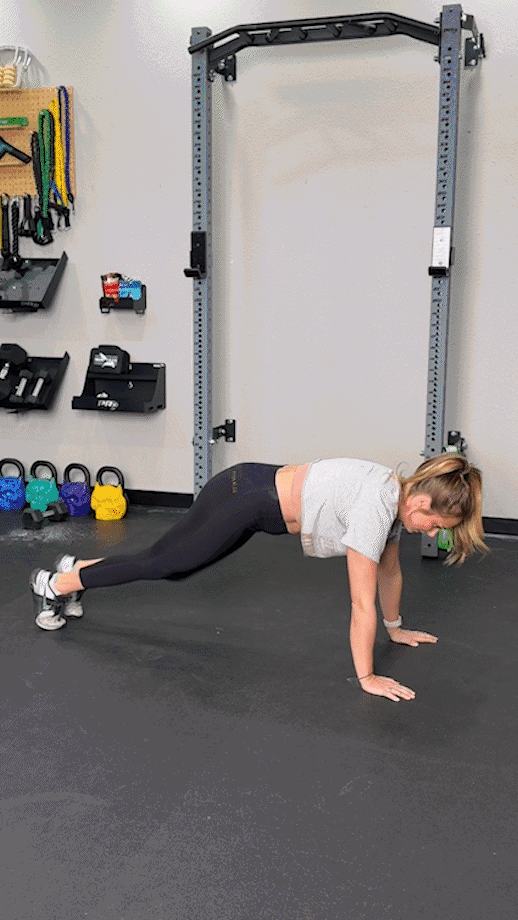
Jumping Jacks
Why do it: Jumping jacks are many people’s gateway into calisthenics exercise. Doing these will have you perfecting your vertical jump while getting your feet moving and used to the impact on your joints before you take off with a lateral bound.
How to do it:
- Stand with your feet together and your arms by your sides.
- Simultaneously jump both feet out and back in while your arms raise up and above your head in an arcing motion.
- Repeat for reps or duration.
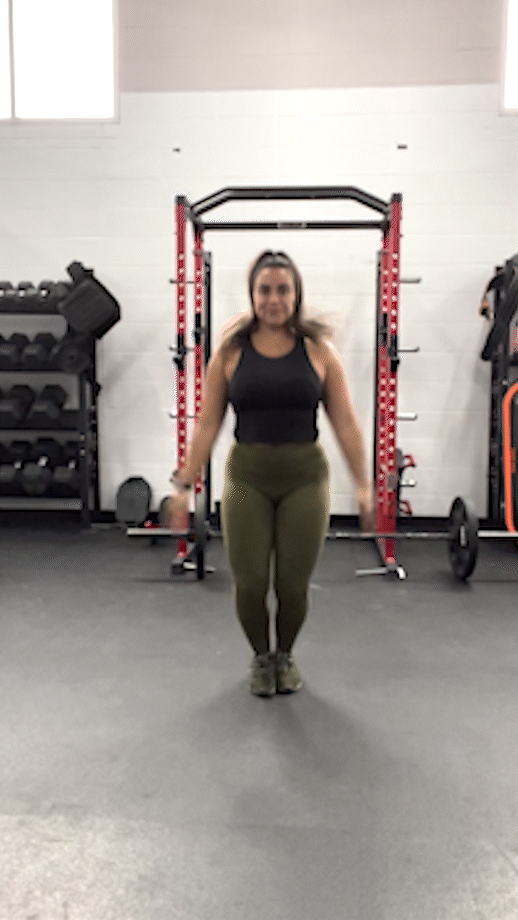
Skater Hops
Why do it: With ski jumps, you jump and land with both feet. Skater hops are more challenging because you jump and land with one foot, helping to improve your balance and coordination. Additionally, because you exercise each side separately, this helps to fix muscular imbalances and address bilateral deficits1.
How to do it:
- Stand tall with your arms down by your sides and feet together.
- Take your right foot off the floor and position your right leg behind your left leg. You’ll want to have a slight bend in your left knee.
- Keep your head neutral and engage your core.
- Jump laterally to the right side as far as possible, landing on your right foot. Your left leg should now be behind your right leg and there should be a slight bend in your right knee.
- On the next repetition, jump to the left side to return to the original position.
- Keep going for reps or time, alternating sides each time.
RELATED: 7 Best Plyometric Exercises
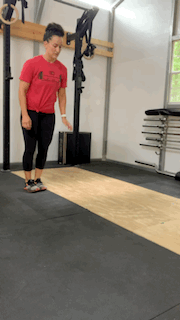
Lunge Jumps
Why do it: Lunge jumps are similar to the skater hops above in that each side of the body works independently to help correct muscular imbalances. Also, ski jumps are a side-to-side exercise, whereas lunge jumps are a front-to-back exercise. It’s important to have a range of exercises in different planes in your workout routine.
How to do it:
- Stand upright with your feet hip-width apart. Your arms should be either down by your sides or both hands placed on your hips.
- Squeeze your glutes and tense your core.
- Step forward with your left leg.
- Bring your back knee (right knee) toward the ground. Your front knee (left knee) should bend at the same time.
- Keep lowering until your left quad is almost parallel to the floor.
- Explode upward with your feet so that they both leave the ground. You’ll want to switch your legs so that your right leg is now in front of your left leg.
- Land before doing another lunge jump so your left leg is in front again.
- Repeat for reps, alternating sides each time.
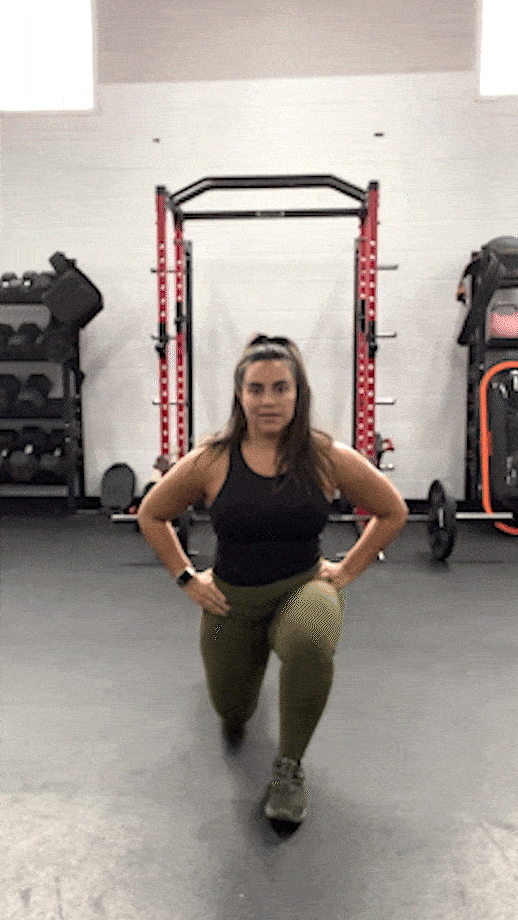
Squat Jumps
Why do it: When you do ski jumps, you begin in a partial squat position. With squat jumps, you go down as deep as possible, helping to work the leg muscles to a greater extent. One isn’t better or worse, but I’d recommend having both movements in your training regimen.
How to do it:
- Stand tall with your feet hip-width apart. Your head should be in a neutral position and your toes should be pointing slightly outward.
- Extend your arms in front of your body and brace your core.
- Squat down to at least parallel, ensuring that your knees are in line with your toes.
- Drive through both feet to jump upward as high as possible.
- Land softly with both feet. If necessary, adjust your body so that you’re in a more comfortable position.
- Continue for time or reps.
RELATED: 8 Best Conditioning Workouts
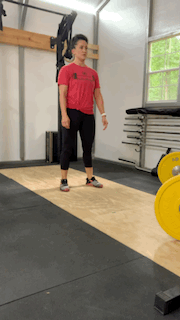
Broad Jumps
Why do it: Broad jumps are similar to ski jumps in that both exercises train explosiveness. You also hit the same lower-body muscle groups. The main difference is the direction you jump and how far you jump. With broad jumps, you jump forward (rather than to the side), and because of this, you’ll likely be able to jump farther.
How to do it:
- Stand upright with your feet slightly wider than hip-width apart. You’ll want your arms to be extended in front of your body.
- Squeeze your glutes, engage your core, and keep your head neutral.
- Enter a partial squat position while simultaneously swinging your arms downwards.
- Drive through both heels to jump forward as far as possible.
- Land softly with both feet, ensuring that you have a slight bend in both knees.
- Keep going for reps.
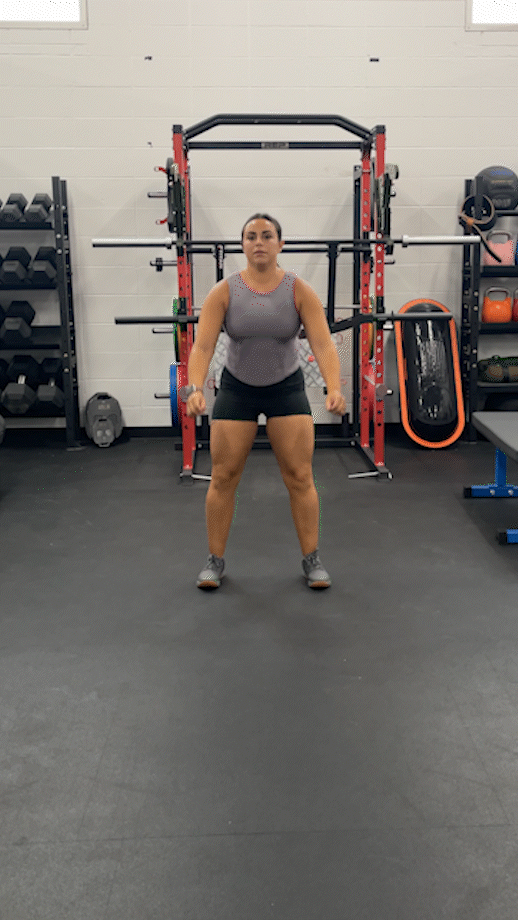
Benefits Of Ski Jumps
Why should you do ski jumps in the first place? They can build muscle in your lower body, help improve your overall cardio fitness, and can be done practically anywhere. Allow me to elaborate:
They Help Build Muscle In Your Lower Body
Ski jumps can activate all lower-body muscles, including your quads, hamstrings, glutes, and calves, which I’ll cover in more detail below. Because ski jumps are a plyometric exercise, they also help improve your coordination and power (especially in your lower body), which can help strengthen your compound lifts such as the back squat and deadlift.
They Help Improve Your Cardiovascular Fitness
Improving your cardiovascular fitness has several benefits, including reduced stress, better sleep, improved mental health, increased lung and heart health, and more. There are many ways to do cardio, but I find that the best way to stick to it is by making it easy to incorporate into your lifestyle. Ski jumps make doing cardio straightforward.
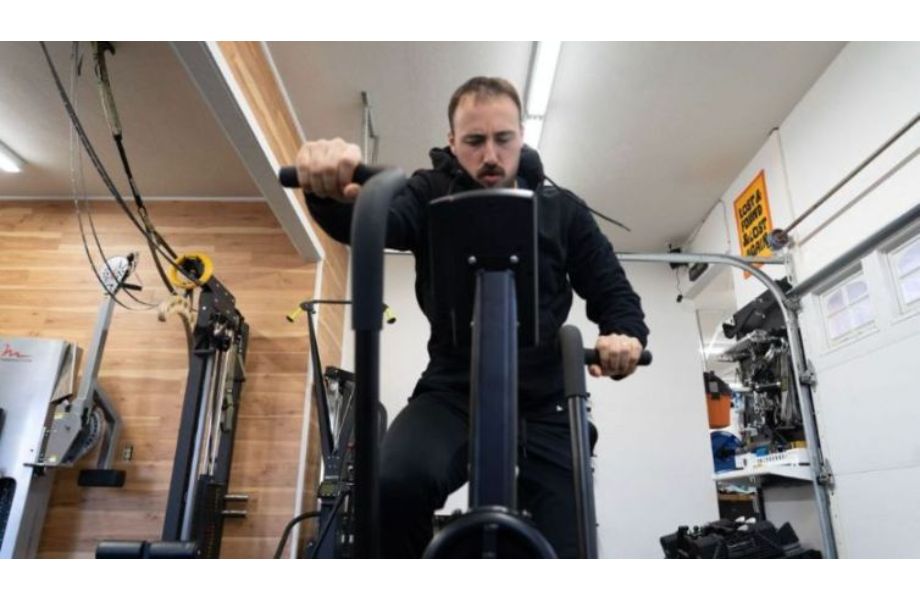
They Can Be Done Anywhere
One of the biggest benefits of ski jumps is that you can do them anywhere. All you need is a little space and a high ceiling. If you don’t have this at home, you can do ski jumps in your yard or local park. This means you don’t need to buy expensive equipment or travel to a gym to reap all the benefits of cardio.
Common Ski Jump Mistakes
I appreciate that ski jumps look easy, but in my experience as a fitness enthusiast and certified personal trainer, I’ve seen gym-goers and clients make some of the following mistakes—aside from not completing a proper warm-up. Here are three, and the steps you can take to avoid them:
Not Shifting Your Weight to the Balls of Your Feet
Although you start ski jumps with your feet flat on the ground, the trick is to shift your weight to the front of your feet (and away from your heels) before jumping laterally. If you’ve been doing this exercise for some time, you likely already do this. This helps you jump higher and further because jumping from your toes is much easier than jumping from your heels.
RELATED: Best Cross-Training Shoes
Not Sticking the Landing
There are two things that you can do to improve your landing. First, land on your toes, then shift your weight to your heels. This reduces the impact ski jumps place on your knee and ankle joints. To further reduce the pressure on both joints, try not to land in an upright position. Instead, land in the same squat position that you were in before initiating the jump.
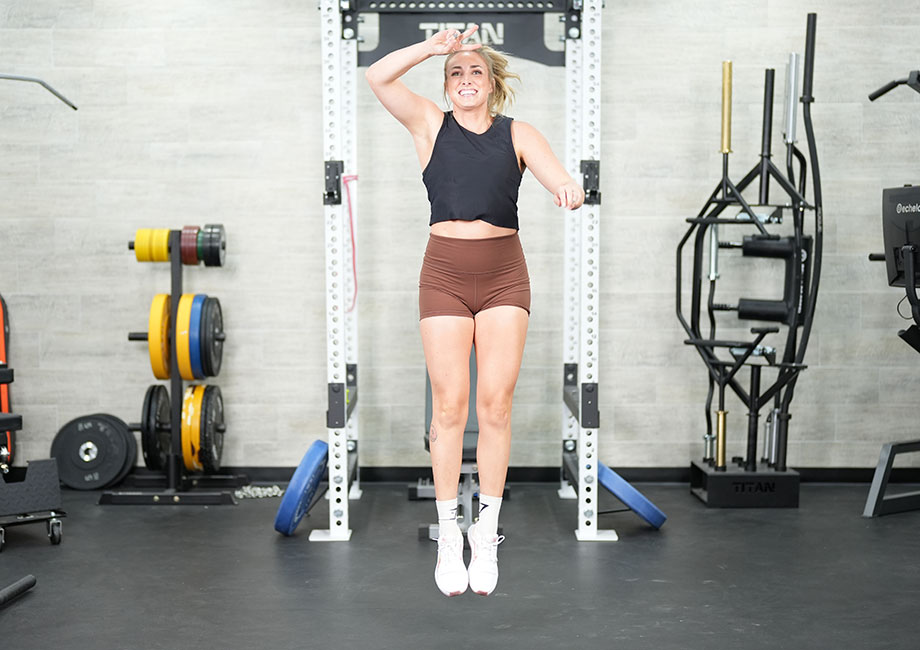
Taking Too Long Between Reps
As you land, think about the next rep. Of course, if you’re new to ski jumps, it’s perfectly reasonable to take your time and adjust your body position if necessary (we don’t want you to get injured!). However, don’t rest too long between each hop—it’s a high-intensity, explosive workout designed to improve your power.
Muscles Worked by Ski Jumps
As mentioned above, ski jumps predominantly work your lower-body muscles, including your quads, hamstrings, glutes, and calves. Here’s a breakdown of each:
- Quadriceps: The quadriceps muscle2 is responsible for knee extension, hip flexion, posture, proper stage of step/gait cycle, and maintenance of patellar stability.
- Hamstrings: The hamstring muscle group3 is comprised of three individual muscles (semitendinosus, semimembranosus, and biceps femoris), and combined, they play a prominent role in hip extension (posterior movement of the femur) and knee flexion (posterior movement of the tibia and fibula).
- Glutes: The gluteal muscle group4 consists of the gluteus maximus, gluteus medius, and gluteus minimus. Its main actions are to extend and externally rotate the thigh.
- Calves: The calf muscles5 are responsible for plantar flexion of the foot and ankle.
Ski Jumps: Final Thoughts
Ski jumps are a bodyweight exercise you can perform anywhere, and regularly doing ski jumps may help you improve your cardiovascular fitness and build muscle in your lower body.
When performing ski jumps, you’ll want to shift your body weight toward your toes (or the balls of your feet) before initiating the jump. Landing on your toes in the squat position helps to take the pressure off your knee and ankle joints.
You can perform ski jumps as a standalone exercise or include them as part of a HIIT cardio workout at home.
Ski Jumps: FAQs
How many calories do ski jumps burn?
The number of calories ski jumps burn depends on several factors, including, but not limited to:
– Age
– Weight
– Genetics
– The amount of muscle mass you have
– The amount of time you do ski jumps
– The intensity of the exercise
You can expect to burn anywhere between five and 20 calories per minute doing ski jumps.
What are ski jumps workouts?
A ski jump workout is any workout that has ski jumps in it. You can do ski jumps as an exercise by itself—for example, doing 20 reps for five sets with a minute of rest in between. However, you’ll see ski jumps more in high-intensity workouts where they’re one exercise out of many, typically in a circuit.
Check out our guide on the benefits of HIIT for more information.
Are side-to-side jumps good?
Side-to-side jumps (aka ski jumps) are better than good—they’re fantastic. They don’t require additional equipment apart from your body weight, so they’re very accessible. Furthermore, they work every muscle in your lower body (including your quads, hamstrings, glutes, and calves) and can help improve your cardio fitness and stamina.
References
- Škarabot J, Cronin N, Strojnik V, Avela J. Bilateral deficit in maximal force production. Eur J Appl Physiol. 2016 Dec;116(11-12):2057-2084. doi: 10.1007/s00421-016-3458-z. Epub 2016 Aug 31. PMID: 27582260.
- Bordoni B, Varacallo M. Anatomy, Bony Pelvis and Lower Limb: Thigh Quadriceps Muscle. [Updated 2023 May 8]. In: StatPearls [Internet]. Treasure Island (FL): StatPearls Publishing; 2024 Jan-. Available from: https://www.ncbi.nlm.nih.gov/books/NBK513334/
- Rodgers CD, Raja A. Anatomy, Bony Pelvis and Lower Limb, Hamstring Muscle. [Updated 2023 Apr 1]. In: StatPearls [Internet]. Treasure Island (FL): StatPearls Publishing; 2024 Jan-. Available from: https://www.ncbi.nlm.nih.gov/books/NBK546688/
- Elzanie A, Borger J. Anatomy, Bony Pelvis and Lower Limb, Gluteus Maximus Muscle. [Updated 2023 Apr 1]. In: StatPearls [Internet]. Treasure Island (FL): StatPearls Publishing; 2024 Jan-. Available from: https://www.ncbi.nlm.nih.gov/books/NBK538193/
- Binstead JT, Munjal A, Varacallo M. Anatomy, Bony Pelvis and Lower Limb: Calf. [Updated 2023 May 23]. In: StatPearls [Internet]. Treasure Island (FL): StatPearls Publishing; 2024 Jan-. Available from: https://www.ncbi.nlm.nih.gov/books/NBK459362/
Further reading

What is a GOLO Diet? Explore its potential for healthy weight loss without calorie counting, plus insights from a registered dietitian on its pros and cons. Read more

In our Weslo Cadence 5.2 Treadmill review, we take a look at the specs of this now-discontinued treadmill. Read more

The plyo push-up will have you exploding with excitement over the results you can get from this high-intensity exercise! Check out our guide right here! Read more

A registered dietician has curated a list of the best sports drinks for those who need some extra oomph during, or after, a workout. Read more

